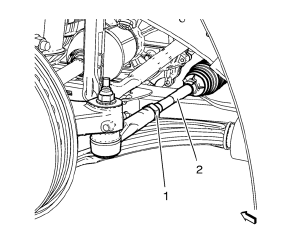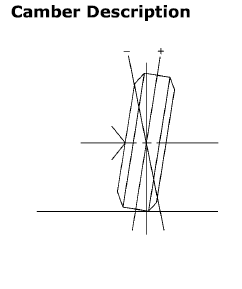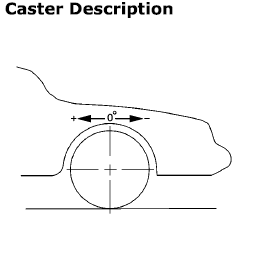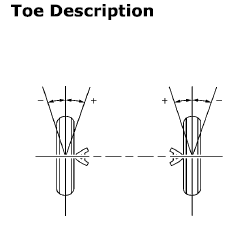Chevrolet Cruze Repair Manual: Wheel Alignment - Steering Wheel Angle and/or Front Toe Adjustment

- Ensure that the steering wheel is set in a straight ahead position.
- Loosen the tie rod jam nut (1).
- Adjust the toe to specification by turning the adjuster (2). Refer to Wheel Alignment Specifications.
Caution: Refer to Fastener Caution in the Preface section.
- Tighten the tie rod jam nut (1) to 35 N·m (26 lb ft).
Rear Caster and Camber Adjustment
The rear caster and camber is not adjustable. If the rear caster and camber angle is not within specifications, inspect for suspension support misalignment or rear suspension damage. Replace any damaged suspension components as necessary.
Rear Camber Adjustment
The rear camber is not adjustable. If the rear camber angle is not within specifications, inspect for suspension support misalignment or rear suspension damage. Replace any damaged suspension components as necessary.
Rear Toe Adjustment
The rear toe is not adjustable. If the rear toe angle is not within specifications, inspect for suspension support misalignment or rear suspension damage. Replace any damaged suspension components as necessary.

Camber is the tilting of the wheels from the vertical when viewed from the front of the vehicle. When the wheels tilt outward at the top, the camber is positive (+). When the wheel tilts inward at the top, the camber is negative (-). The amount of tilt is measured in degrees from the vertical. Camber settings influence the directional control and the tire wear.
Too much positive camber will result in premature wear on the outside of the tire and cause excessive wear on the suspension parts.
Too much negative camber will result in premature wear on the inside of the tire and cause excessive wear on the suspension parts.
Unequal side-to-side camber of one degree or more will cause the vehicle to pull or lead to the side with the most positive camber.

Caster is the tilting of the uppermost point of the steering axis either forward or backward, when viewed from the side of the vehicle. A backward tilt is positive (+) and a forward tilt is negative (-). Caster influences directional control of the steering but does not affect the tire wear. Caster is affected by the vehicle height, therefore it is important to keep the body at its designed height. Overloading the vehicle or a weak or sagging rear spring will affect caster. When the rear of the vehicle is lower than its designated trim height, the front suspension moves to a more positive caster. If the rear of the vehicle is higher than its designated trim height, the front suspension moves to a less positive caster.
With too little positive caster, steering may be touchy at high speed and wheel returnability may be diminished when coming out of a turn.
If one wheel has more positive caster than the other, that wheel will pull toward the center of the vehicle. This condition will cause the vehicle to pull or lead to the side with the least amount of positive caster.

Toe is a measurement of how much the front and/or rear wheels are turned in or out from a straight-ahead position. When the wheels are turned in, toe is positive (+). When the wheels are turned out, toe is negative (-). The actual amount of toe is normally only a fraction of a degree. The purpose of toe is to ensure that the wheels roll parallel.
Toe also offsets the small deflections of the wheel support system that occur when the vehicle is rolling forward. In other words, with the vehicle standing still and the wheels set with toe-in, the wheels tend to roll parallel on the road when the vehicle is moving.
Improper toe adjustment will cause premature tire wear and cause steering instability.
 Wheel Alignment Measurement
Wheel Alignment Measurement
Steering and vibration complaints are not always the result of improper
alignment. One possible cause is wheel and tire imbalance.
Another possibility is tire lead due to worn or improperly manuf ...
 HVAC System
HVAC System
Specifications
...
Other materials:
Front Bumper Fascia Replacement
Preliminary Procedure
Remove the front bumper fascia opening cover. Refer to Front Bumper Fascia
Opening Lower Cover Replacement.
Front Wheelhouse Liner Bolt (Qty: 8)
Caution: Refer to Fastener Caution in the Preface section.
Tighten
2.5 N·m(23 lb in)
Front Bumper Fascia Bolt (Q ...
Installation Procedure
Align the body side outer panel reinforcement.
Drill 8 mm (5/16 in) for plug welding along the edges of the body side
outer panel reinforcement as noted from the original panel.
Clean and prepare the attaching surfaces
for welding.
Position the body side outer pa ...
Rear Side Door Weatherstrip Replacement - Body Side
Rear Side Door Weatherstrip - Body Side
Procedure
Start at the front upper corner of the door opening and pull the
weatherstrip away from the door opening flange.
Position the weatherstrip in the upper corner of the center pillar.
Working downward along the front edge, in ...
